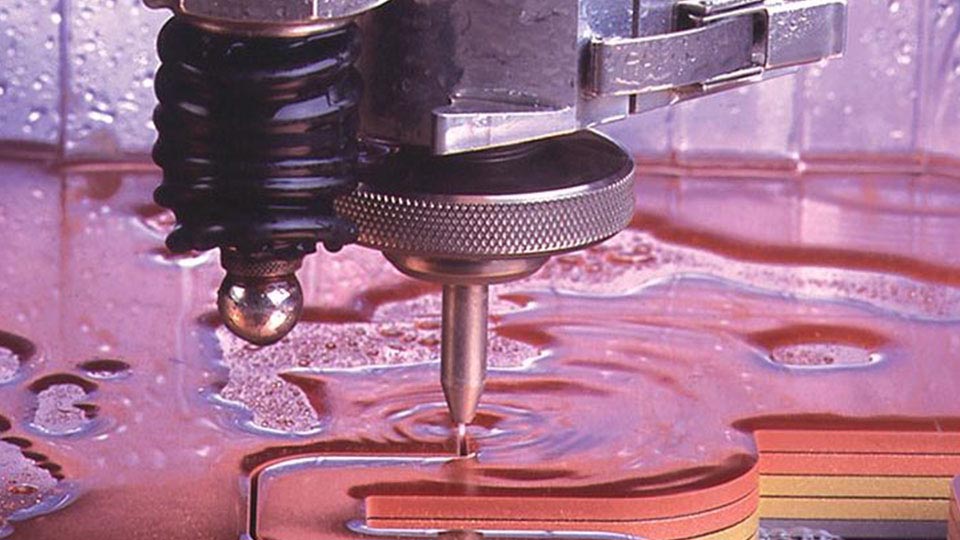Cutting composite material almost always requires a different approach than more traditional materials like metals because of its homogenous characteristics. Using conventional cutting applications and machining techniques on composite material could cost your shop thousands of unnecessary dollars in tool wear and replacement. Using more abrasive techniques like the ones used for cutting granite or titanium may have the opposite effect, compromising the strength of your composite.
Cutting composites correctly takes a greater understanding of your materials and your machine’s capabilities. Waterjet is a very popular application used to cut composite materials. SigmaNEST interviewed Glenn Osborne, President of G & W Machinery to explore the details of abrasive waterjet cutting for composites. Glenn Osborne has been in the waterjet industry for over 20 years.
Why Use Abrasive Waterjet:
1. Speed and Accuracy
Speed and accuracy are the most talked about to benefits of waterjet machines as compared to knife cutting machines which are also often used to cut composites. Osborne explained the difference between cutting with a waterjet versus a knife. “A waterjet cut is like using a fine pencil, while a knife is like using a fat tip marker.” Abrasive waterjets typically make cleaner and more accurate cuts than other applications. Accuracy is important in many industries but plays a heavy role in safety for the aerospace industry.
2. Cleanliness
Osborne offers a second, often overlooked benefit to using an abrasive waterjet: cleanliness. “Many other cutting processes, like knife or router, can produce dust and residue that creates airborne contaminants that can not only be harmful to the machines, but to the integrity of parts themselves.” Additionally, waterjets are relatively easy to use and leave very little cleanup.
3. Easy Set Up
A third factor to consider is the importance of easy setup and minimal tooling requirements. Since composite parts often involve small production batches with one or two parts, minimal set-up time is vital for profitability. With intricate composites like Kevlar, every piece of Kevlar has a unique makeup, requiring a handful of cuts unique to each sheet. Due to the meticulous design of Kevlar, quick set-up is critical for quicker production time. In addition, the ability to nest parts within 1/16” of each other reduces material waste and makes for a more cost-effective production process.
Obstacles When Using Abrasive Waterjet:
1. Piercing
Osborne stresses that one of the most important considerations to cutting composites is the ability to pierce a hole. Composites most unique feature, its strength, also serves as its biggest obstacle when creating a hole. “Composite material is often weaved with hard and soft spots which can turn hole-making into a guessing game.” The biggest concern when piercing a hole in a composite is the chance of damaging the strands and resins and ultimately separating the layers, compromising the integrity of the parts. Waterjets do have the ability to use lower pressures to shear the fibers instead of pulling them, leaving the composite intact with no frayed fibers.
2. Harder and Faster Isn’t Always Better
Lastly, Osborne draws attention to a nontraditional view on PSI. “Don’t let the fancy advertising fool you, more PSI doesn’t always equate to a more efficient process.” This concept is closely tied to the law of diminishing returns; which states “there is a point at which the level of benefit gained is less than the amount of money or energy invested”. Waterjets can be expensive to run at very high speeds and, although it might make the individual job quicker, it could drive production costs through the roof. Osborne suggests doing some experimenting to find the right balance between speed and cost efficiency.

